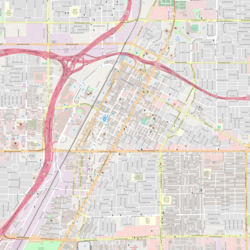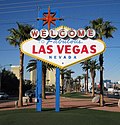| Gold Spike | |
|---|---|
 Gold Spike shortly after its extensive remodeling in 2009 | |
 | |
| Former names | Rendezvous, Gold Spike Hotel & Casino |
| General information | |
| Type | Residential |
| Location | Las Vegas, Nevada |
| Address | 217 Las Vegas Blvd North |
| Opening | 1976 |
| Renovated | 2008-2010, 2013 |
| Owner | Tony Hsieh |
| Other information | |
| Number of rooms | 162 |
| Number of restaurants | Golden Grille |
| Website | |
| http://www.goldspike.com/ | |
| Gold Spike Hotel & Casino | |
|---|---|
| Location | Las Vegas, Nevada |
| Address | 217 Las Vegas Blvd North |
| Opening date | 1976 |
| Closing date | April 14, 2013 |
| No. of rooms | 112 |
| Total gaming space | 6,000 sq ft (560 m2) |
| Notable restaurants | Golden Grille |
| Casino type | Land-based |
| Owner | The Siegel Group |
| Operating license holder | Golden Gaming |
| Architect | Jon Jerde, DeRuyter Butler and Atlandia Design |
| Previous names | Rendezvous |
| Renovated in | 2004, 2006, 2011 |
| Coordinates | 36°10′16″N115°08′26″W / 36.1710°N 115.1405°W |
Gold Spike (formerly Gold Spike Hotel & Casino) is a bar, lounge, residential building, and former boutique 112-room, [1] seven floor hotel. It is connected with the Oasis at the Gold Spike, a 50-room three floor hotel located in downtown Las Vegas. It was owned by entrepreneur Tony Hsieh and his Downtown Project, having bought it from The Siegel Group; and the casino was operated by Golden Gaming.
Contents
- History
- Rendezvous (1976-85)
- Gold Spike Hotel & Casino (1985-2013)
- Casino closure
- Oasis at The Gold Spike
- References
- External links
Hsieh closed the casino on April 14, 2013. [2] After a three-week remodel, Gold Spike re-opened the casino as a restaurant and bar on May 6, 2013. The hotel portion of the building was recently converted into permanent and temporary workforce housing for Downtown Project, entrepreneurs, and Zappos; Oasis hotel is a separate building on the same property. [3] [4]




